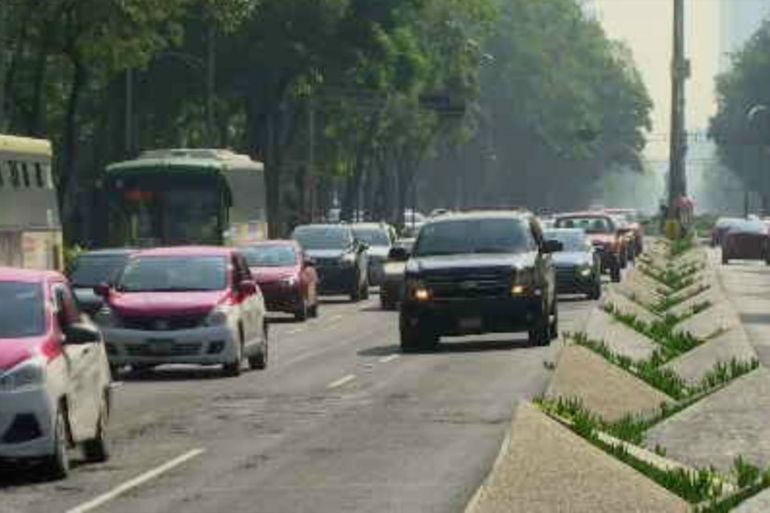Pollution alert issued for Mexico’s capital
Despite the rainy season, ozone levels in Mexico City still reach hazardous levels.

A pollution alert has been issued for the Mexican capital after ozone levels reached more than 150 percent of the acceptable levels.
A pollution alert is rare during the rainy season because the downpours would normally wash the pollution out of the atmosphere.
Keep reading
list of 4 itemsAfter the Hurricane
World’s coral reefs face global bleaching crisis
Why is Germany maintaining economic ties with China?
However, this year the pollution has been particularly bad. In March, the government issued the first “ozone alert” in almost 14 years.
Ozone is a colourless gas which can irritate the respiratory system, aggravate asthma and even cause permanent lung damage. It has also been seen to affect the growth of trees and plants.
In April the threshold for ozone alerts was lowered from an index of 190 to 150, meaning the alerts have now become more frequent. Alerts were subsequently issued in early April and early May.
The sad tale of Mexico City’s air quality tells of a city which has gone from among the cleanest in the world to among the dirtiest in the space of a generation.
According to researchers at the University of Salzburg, the average visibility was 100km in the 1940s, but has now reduced to approximately 1.5km.
These days Mexico City is one of the world’s largest metropolitan areas, home to nearly 21 million people.
As the population has boomed, pollution has increased dramatically.
Many of the problems faced by the city are exacerbated by geography. The city is at an elevation of approximately 2,240 metres above sea level, and is surrounded by towering mountains.
Only in the north is there a gap in the mountain range and this means a lot of the pollution is trapped over the city.
In the winter months, an area of high pressure usually dominates the weather and this acts as a lid on the atmosphere, trapping pollutants near the ground.
In the summer, the air is slightly improved. This is partly due to the fact that summer is the rainy season and the rain helps to clean the atmosphere, but also because the warm weather helps to lift the air, which moves the pollution away from the residents.
The height of the city does not help the problem.
Most vehicles are designed to work at sea level and at high altitudes, less oxygen is available.
This means they are less efficient, which increases the emissions of carbon monoxide, hydrocarbons and other pollutants, including volatile organic compounds.
If these volatile organic compounds are exposed to ultraviolet radiation from the sun, they will produce ozone. Unfortunately, not only does the altitude increase the amount of these compounds in the atmosphere, it also increases the amount of ultraviolet radiation.
At sea level, our atmosphere helps to filter out the radiation, but at high altitudes the atmosphere is thinner and therefore there is more radiation present.
The increase in ultraviolent radiation, together with the increase in pollutants, drastically increases the amount of ozone pollution.
Air quality has improved in Mexico City in recent years thanks to the installation of catalytic converters in cars and the removal of lead from fuel.
Money has also been invested in public transport, extending subways and improving the bus system.
However, as the population continues to grow, more needs to be done to alleviate the problems suffered in the city which used to be famed for its clean air.
– Additional reporting by Steff Gaulter.